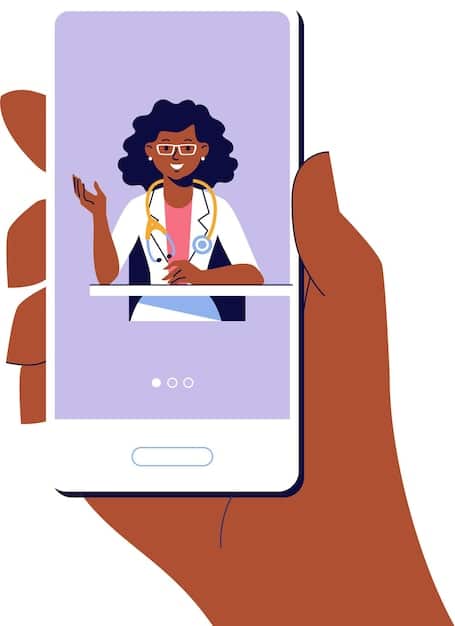Unveiling Hidden Savings: 7 Ways to Lower Prescription Costs in 2025

Unveiling Hidden Savings: 7 Ways to Lower Your Prescription Costs in 2025 offers practical strategies for Americans to manage and reduce their prescription expenses, from leveraging generic alternatives and patient assistance programs to exploring pharmacy discount cards and telehealth options.
Are you looking for ways to cut down on your healthcare expenses? Discover effective strategies for Unveiling Hidden Savings: 7 Ways to Lower Your Prescription Costs in 2025 and make your budget go further.
Understand Generic Medications
One of the simplest yet most effective ways to lower your prescription costs is to understand and utilize generic medications. Generic drugs contain the same active ingredients as their brand-name counterparts but are typically much cheaper.
What are Generic Medications?
Generic medications are copies of brand-name drugs that have the same dosage, safety, strength, quality, how they are taken, and intended use. When a brand-name drug’s patent expires, other manufacturers can produce and sell generic versions.
Why are Generics Cheaper?
Generic drugs are cheaper because generic manufacturers do not have to repeat the expensive clinical trials and research that the brand-name companies conducted. This significant reduction in research and development costs allows them to offer the drug at a lower price.

- Ask Your Doctor: Always ask your doctor if there is a generic alternative to the medication they are prescribing.
- Check with Your Pharmacist: Your pharmacist can also provide information on generic options and their costs.
- Compare Prices: Even among generic drugs, prices can vary, so it’s wise to compare prices at different pharmacies.
By making the switch to generic medications, you can potentially save hundreds or even thousands of dollars each year without compromising on the quality or effectiveness of your treatment.
Explore Pharmacy Discount Cards
Pharmacy discount cards can be a valuable tool for lowering prescription costs, especially if you don’t have insurance or your insurance doesn’t cover a particular medication. These cards provide discounts on prescription drugs at participating pharmacies.
How do Pharmacy Discount Cards Work?
Pharmacy discount cards work by partnering with pharmacies to negotiate lower prices on medications. When you use the card, the discount is applied at the point of sale, reducing your out-of-pocket expenses.
Where to Find Pharmacy Discount Cards
You can find pharmacy discount cards through various sources, including:
- Online Platforms: Many websites offer free pharmacy discount cards that you can download or print.
- Pharmacy Websites: Some pharmacies offer their own discount cards to attract customers.
- Healthcare Providers: Your doctor’s office or clinic may provide discount cards or information on available programs.
Comparing different discount cards can help you find the best deals on your medications. Websites like GoodRx and WellRx allow you to search for the lowest prices and discounts available in your area.
Utilize Patient Assistance Programs
Patient Assistance Programs (PAPs) are offered by pharmaceutical companies to provide free or low-cost medications to individuals who meet specific income and eligibility requirements. These programs can be a lifeline for those struggling to afford their prescriptions.
Eligibility for Patient Assistance Programs
Eligibility for PAPs typically depends on factors such as income, insurance coverage, and medical condition. Each program has its own set of criteria, so it’s important to research and apply to programs that fit your situation.
How to Apply for PAPs
The application process for PAPs usually involves completing an application form, providing proof of income, and getting your doctor to certify your medical condition. You can find information on PAPs through:
- Pharmaceutical Company Websites: Most major pharmaceutical companies have information about their PAPs on their websites.
- Non-profit Organizations: Organizations like the Partnership for Prescription Assistance offer resources and guidance on finding and applying for PAPs.
- Healthcare Providers: Your doctor or healthcare provider can help you identify suitable PAPs and assist with the application process.
Taking the time to explore and apply for Patient Assistance Programs can significantly alleviate the financial burden of prescription medications, ensuring you have access to the treatments you need.
Consider Telehealth for Prescriptions
Telehealth has emerged as a convenient and cost-effective way to manage your healthcare needs, including prescriptions. By consulting with a doctor online, you can often save time and money compared to traditional in-office visits.
Benefits of Telehealth for Prescriptions
Telehealth offers several key advantages for prescription management:
- Convenience: Consult with a doctor from the comfort of your own home, eliminating travel time and costs.
- Lower Costs: Telehealth consultations are often less expensive than in-person visits.
- Quick Access: Get prescriptions and refills quickly and easily, without long wait times.
How Telehealth Works
Telehealth platforms connect you with licensed healthcare providers through video consultations, phone calls, or messaging. During the consultation, you can discuss your medical condition, review your prescription needs, and receive a new prescription or refill if appropriate.

Many telehealth providers also offer prescription delivery services, further streamlining the process and saving you a trip to the pharmacy.
Negotiate with Your Pharmacist
Don’t hesitate to negotiate with your pharmacist to potentially lower your prescription costs. Pharmacists are often willing to work with you to find affordable options and may be able to offer discounts or inform you of available savings programs.
Tips for Negotiating
Here are some tips for negotiating with your pharmacist:
- Ask About Cash Prices: Sometimes paying the cash price for a prescription can be cheaper than using insurance, especially if you have a high deductible.
- Inquire About Coupons: Pharmacists may have access to manufacturer coupons or other discounts that can lower your cost.
- Discuss Alternatives: Ask if there are any alternative medications that are equally effective but more affordable.
Building a relationship with your pharmacist can also be beneficial. They can provide personalized advice and help you navigate the complexities of prescription pricing.
Review Your Insurance Coverage
Regularly reviewing your insurance coverage is essential to ensure you’re getting the best possible value for your prescription needs. Understanding your plan’s formulary, copays, and deductible can help you make informed decisions and optimize your healthcare spending.
Understanding Your Formulary
A formulary is a list of prescription drugs covered by your insurance plan. Drugs are typically categorized into different tiers, with varying copays for each tier. Higher-tier drugs usually have higher copays, while lower-tier drugs are more affordable.
Strategies for Optimizing Coverage
Here are some strategies for optimizing your insurance coverage:
- Choose Preferred Drugs: Opt for medications that are on your plan’s preferred drug list to minimize your copays.
- Consider Mail-Order Pharmacies: Many insurance plans offer mail-order pharmacy services, which can provide discounts on long-term medications.
- Review Your Plan Annually: Take the time to review your insurance plan each year during open enrollment to ensure it still meets your needs and budget.
By actively managing your insurance coverage, you can avoid unexpected costs and ensure you’re getting the most out of your benefits.
Shop Around for the Best Prices
Prescription drug prices can vary significantly from one pharmacy to another, so it’s always wise to shop around for the best deals. Comparing prices at different pharmacies, both online and brick-and-mortar, can lead to substantial savings.
Online vs. Local Pharmacies
Both online and local pharmacies have their pros and cons. Online pharmacies may offer lower prices and greater convenience, but it’s important to ensure they are licensed and reputable. Local pharmacies provide personalized service and the opportunity to build a relationship with your pharmacist.
Price Comparison Tools
Utilize online price comparison tools to quickly and easily compare prescription drug prices at different pharmacies. Websites like GoodRx, Blink Health, and SingleCare allow you to search for the lowest prices in your area and even provide coupons for additional savings.
By taking the time to shop around, you can significantly reduce your prescription costs and find the best value for your medications.
| Key Point | Brief Description |
|---|---|
| 💊 Generic Medications | Opt for generic versions of brand-name drugs for significant savings. |
| 💳 Discount Cards | Use pharmacy discount cards to lower prescription costs at participating pharmacies. |
| 🤝 Patient Programs | Apply for Patient Assistance Programs for free or low-cost medications. |
| 💻 Telehealth | Consider telehealth for convenient and often cheaper prescription management. |
Frequently Asked Questions
▼
Yes, generic drugs contain the same active ingredients as brand-name drugs and are required to meet the same safety and efficacy standards set by the FDA.
▼
No, you can typically only use one discount card per prescription. It’s best to compare discounts to see which card offers the best price.
▼
Check the pharmaceutical company’s website or visit the Partnership for Prescription Assistance to review specific eligibility requirements.
▼
Telehealth is suitable for many common prescriptions, but some controlled substances or specialized medications may require an in-person visit.
▼
Talk to your doctor or pharmacist about alternative, more affordable medications or explore additional assistance programs from non-profit organizations.
Conclusion
Lowering your prescription costs in 2025 involves a combination of informed decision-making and proactive strategies. By understanding your options, negotiating with your pharmacist, and utilizing available resources, you can take control of your healthcare expenses and ensure access to the medications you need.





